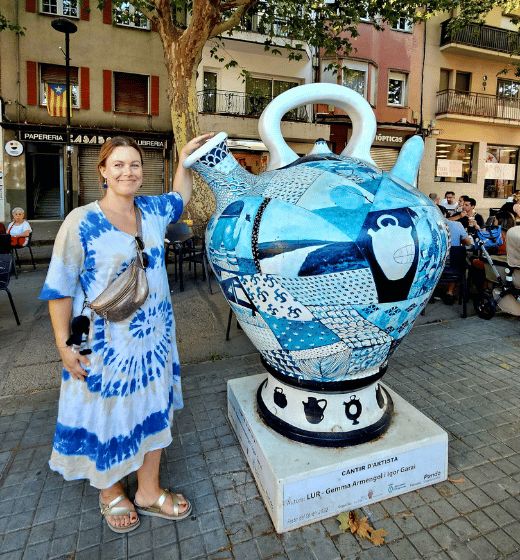

As a host teacher and founder of Spanish Express living here in Barcelona, I often meet students who arrive a little nervous about solo travel. Some are on their first solo trip. Others are experienced solo travelers but want something deeper than just major attractions and busy streets.
And I get it.
When you travel in Barcelona alone, you don’t want to feel alone. You want to feel connected to the language, the locals, and even to other solo travelers passing through the same narrow cobblestone streets.
That’s why I’ve made it my mission to create experiences that go beyond the usual tourist routes. Over the years, I’ve taken dozens of SHIP (Spanish Home Immersion Programme) students to places that show a different side of this beautiful city and its surrounding towns. We’ve walked through hidden art districts, shared tapas in quiet corners, and taken spontaneous day trips where the real learning happens.
So if you’re planning to visit Barcelona solo and wondering where to begin, this list is for you. Here are 13 unique things to do on your solo adventure in Barcelona, all tested and loved by my SHIP students.

Let’s begin.
1. El Maresme Coast
Just a short ride from the busy city center, the El Maresme coast has become a special part of many of my students’ solo adventures in Spain. The quiet beaches, open skies, and small towns offer a softer rhythm, perfect for learning Spanish while slowing down.
It’s a place I love sharing with students who join me for their solo travel in Barcelona. We leave the noise behind and let the sea do the talking.
When Gunilla arrived, she told me she needed space to think. We walked along the coast early in the morning, just the two of us and the sound of waves. Those walks gave her time to reflect, practise new words, and enjoy the stillness.
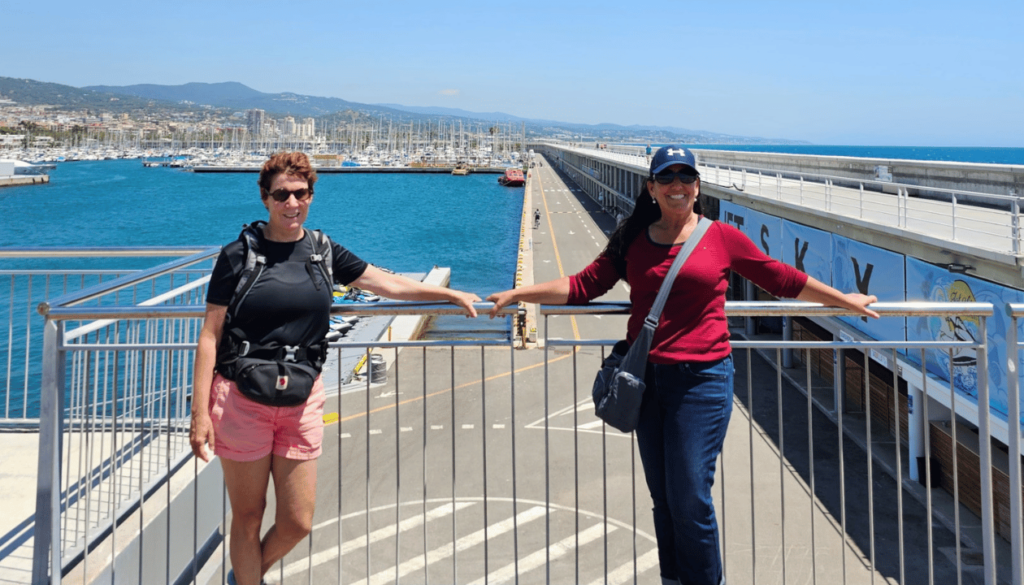
Jessica and Paola, on the other hand, were full of energy. We explored the local market together in Mataró, tried regional cheeses, other local food and chatted with vendors in Spanish. Their joy was contagious. Later, we sat near the marina and talked about how different this trip felt compared to their usual holidays. No rush, no schedule, just real life in Spain.
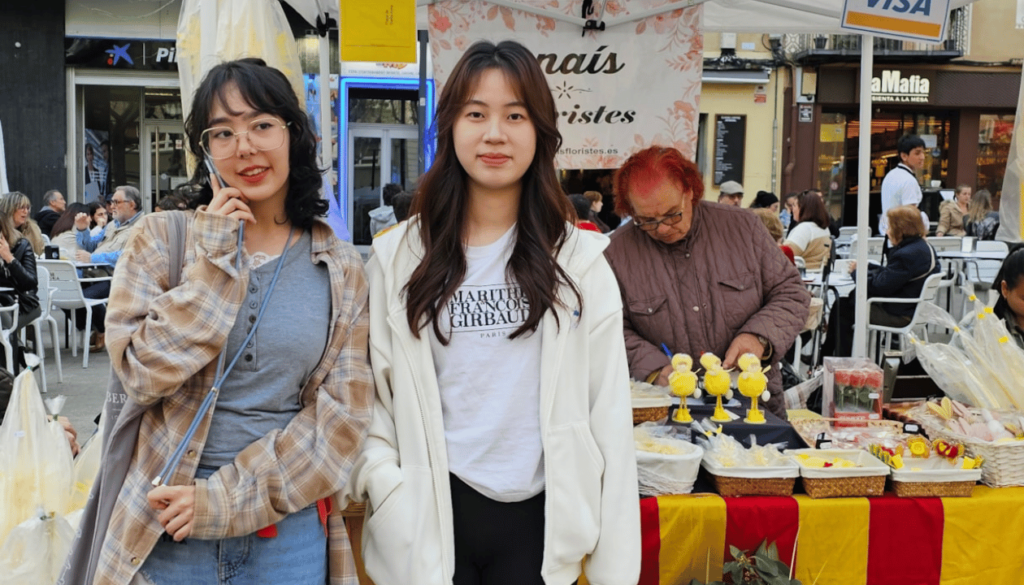
Fallon found her moment during a sunset walk. We had just finished a light meal at one of the local tapas bars, and she stood quietly watching the sea. “I didn’t know solo travel could feel like this,” she said. “I thought I’d feel alone, but I don’t.”
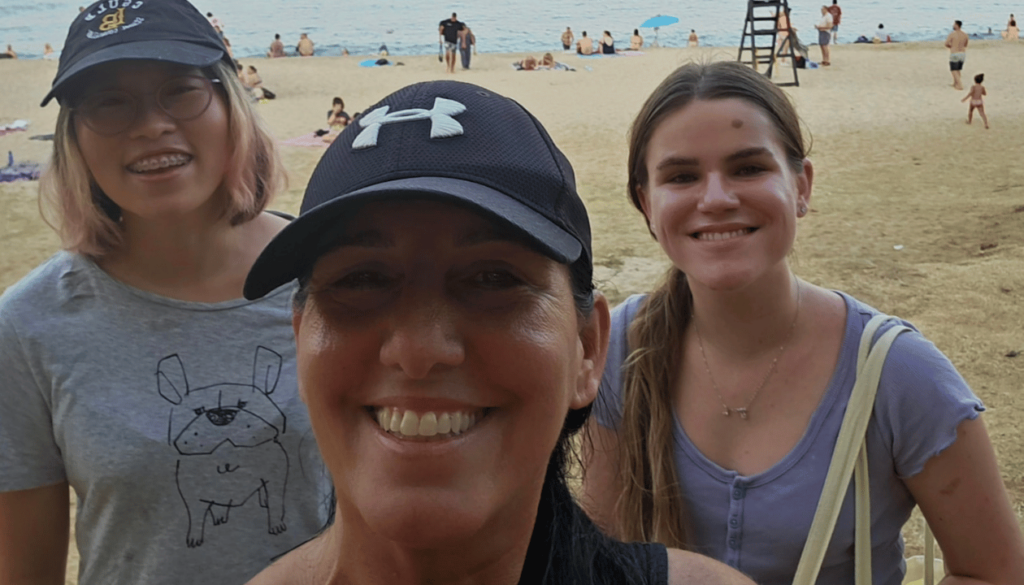
And then there was Richard, who loved the calm. He spent an afternoon sketching the harbor while I walked the dogs. Later, we shared coffee at a small café where he practised ordering in Spanish, slowly and proudly.
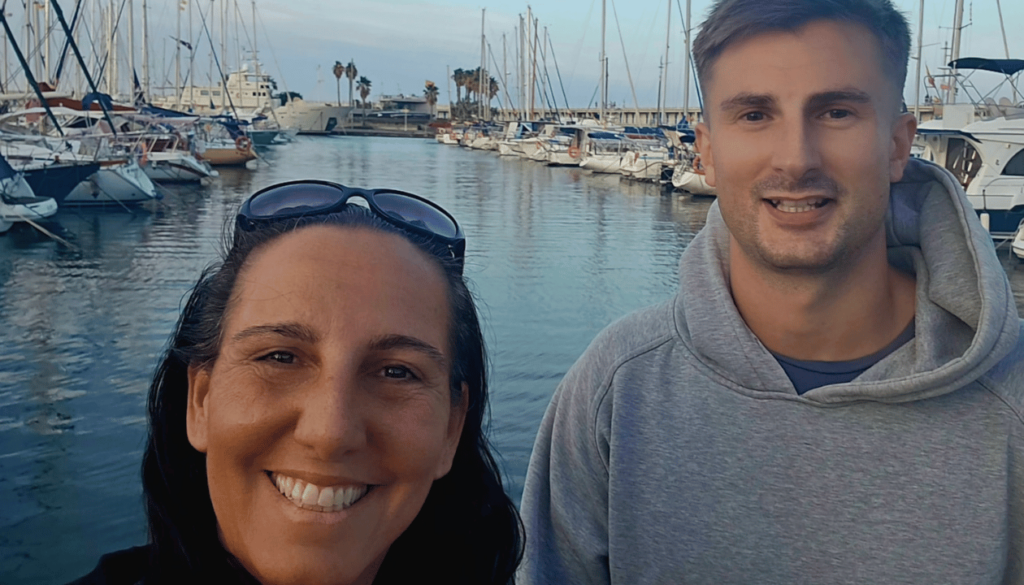
Each of these students came for their own reasons, but what they found along the Maresme coast was something deeper: stillness, confidence, and a space to speak at their own pace. It’s what I always hope for, especially for first-time solo travelers who need a soft landing before jumping into the full Barcelona experience.
If you’re planning to visit Barcelona alone, take a few hours to explore the coast. You’ll find more than a beach. You’ll find your breath.
2. Dosrius
Not far from the coast is a quiet little town called Dosrius, one of those places that almost never makes it into a Barcelona guide. But I take many of my SHIP students there because it’s the perfect break from the city and a great way to connect with local life.
This isn’t a place packed with major attractions. There are no skip-the-line tickets or tour groups with flags. Instead, you’ll find cobblestone streets, fresh air, and friendly faces. It’s ideal for solo travelers looking to practise Spanish while enjoying something slower, more personal.
I remember taking Riona there one afternoon. She had just arrived for her first solo trip to Spain and wanted a peaceful start. We walked through the forest trails near the Parc del Montnegre i el Corredor, listening to the sounds of nature and stopping for a picnic. She told me it was the first time she felt truly present since arriving.
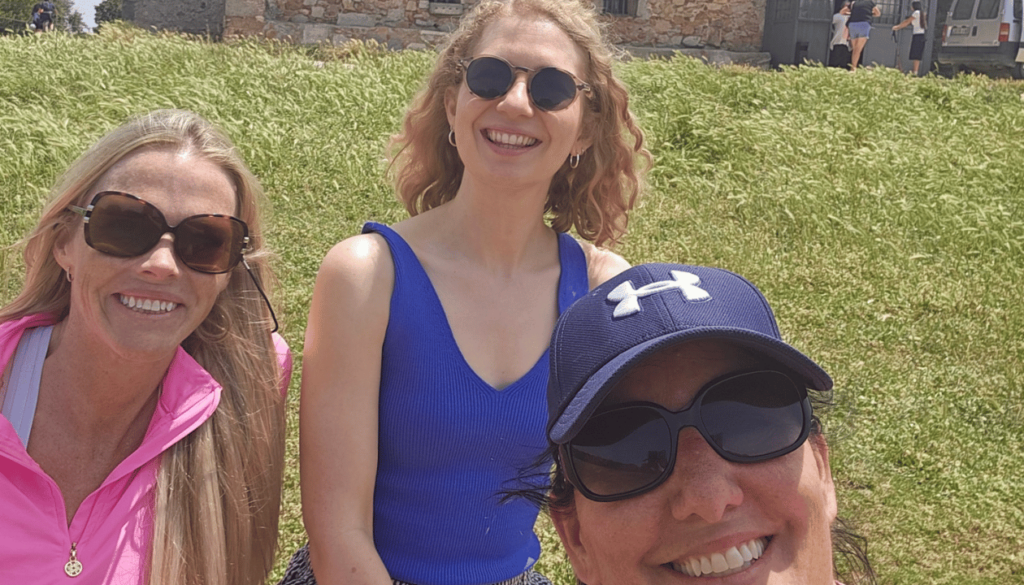
When Elaine joined us. Her Spanish was already strong, so she used the trip as a chance to speak naturally with locals, asking for directions, commenting on shop windows, even chatting with an older woman selling homemade olive oil. I saw her confidence grow with every interaction.
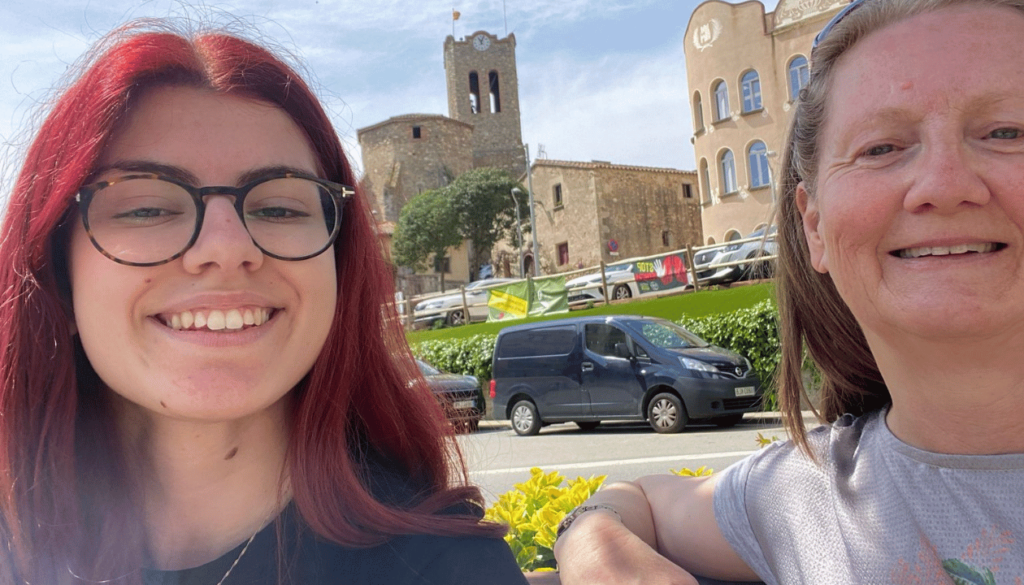
For both of them, Dosrius offered more than a day trip. It gave them a chance to practise real Spanish in real life outside the classroom, surrounded by fresh air, and far from the busy streets of Barcelona.
If you’re planning to travel to Barcelona, I recommend adding Dosrius to your list. It’s safe, simple, and full of small surprises. And for solo female travelers, it offers a sense of calm that’s often hard to find in crowded city spots.
3. Jug Museum in Argentona
One of the loveliest parts of traveling solo in Barcelona, Spain is discovering small places you might never visit on a group tour. The Jug Museum in Argentona is exactly that kind of place. It’s quiet, creative, and just unusual enough to stick in your memory.
I always like to bring students there when they want something peaceful but still full of culture. It’s also a perfect stop for solo travelers who enjoy art, history, and little museums with personality. The museum itself is tucked inside a charming old building, within walking distance of a few local bakeries where we often stop for something sweet.

Susan came with me one sunny morning. She had been feeling a little unsure about being alone in Barcelona, so we planned this short trip to ease into things. As soon as we walked in, she smiled. She loved how simple and welcoming it felt. We talked about the ceramics and their history in Spanish. It was calm, unhurried, and helped her find her footing again.

Later, Elaine joined us. She loved discovering things off the typical tourist path. She practised describing the pieces in Spanish and even started chatting with the woman at the front desk. It reminded me that the best kind of language learning often comes in places like this, where no one’s rushing you, and where you can just be present.

Museums like these are also perfect for solo diners who enjoy finding a few tables outside for a coffee afterwards. You don’t need to book in advance or look for skip-the-line access, take the train, bring a small notebook, and let the town surprise you.
4. Nau Gaudí
If you love architecture and want a break from the crowds around La Sagrada Familia, there’s a quiet gem just outside the city that I always recommend to my SHIP students: Nau Gaudí in Mataró.
It’s a beautiful space, a former textile factory turned cultural center, and it’s Gaudí’s earliest works. You won’t find long lines or tour buses here. Just light, brick, and history. It’s ideal for solo travelers who enjoy art and reflection, and a great way to save money while still exploring Catalan design.
Richard was the first student on this list I took there. He had already visited Casa Batlló and La Pedrera, but this one left a different impression. “It feels more human,” he said. He sat down with his sketchbook and spent half an hour drawing the lines of the building. That’s something I love about solo travel—you can take your time.
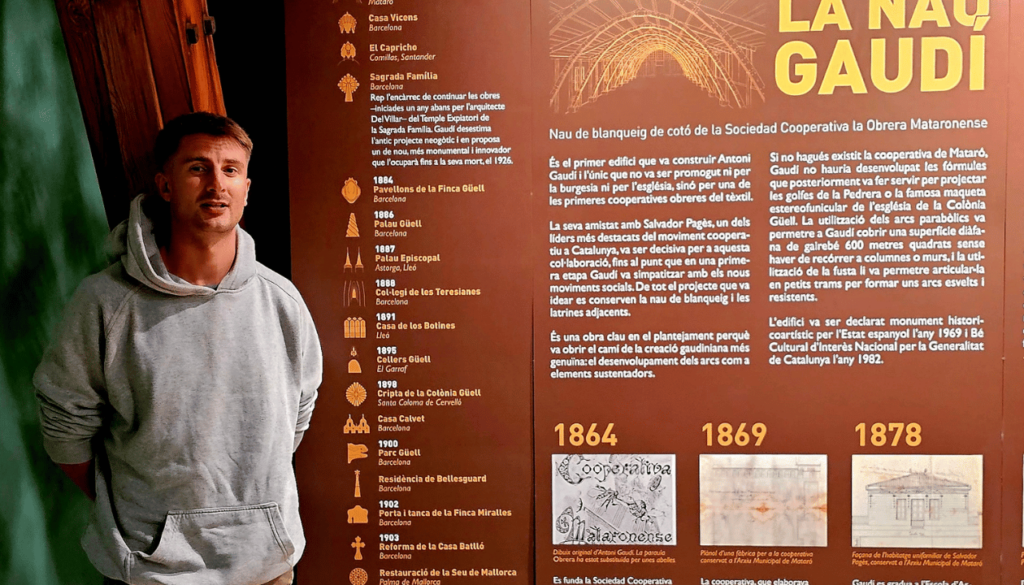
When Jessica and Paola joined me for a walking tour of Mataró, we started from Nau Gaudíand ended at the town market. They practised vocabulary related to design, materials, and history. And because it wasn’t crowded, they could speak Spanish freely with the museum staff, something that’s hard to do in more popular spots.
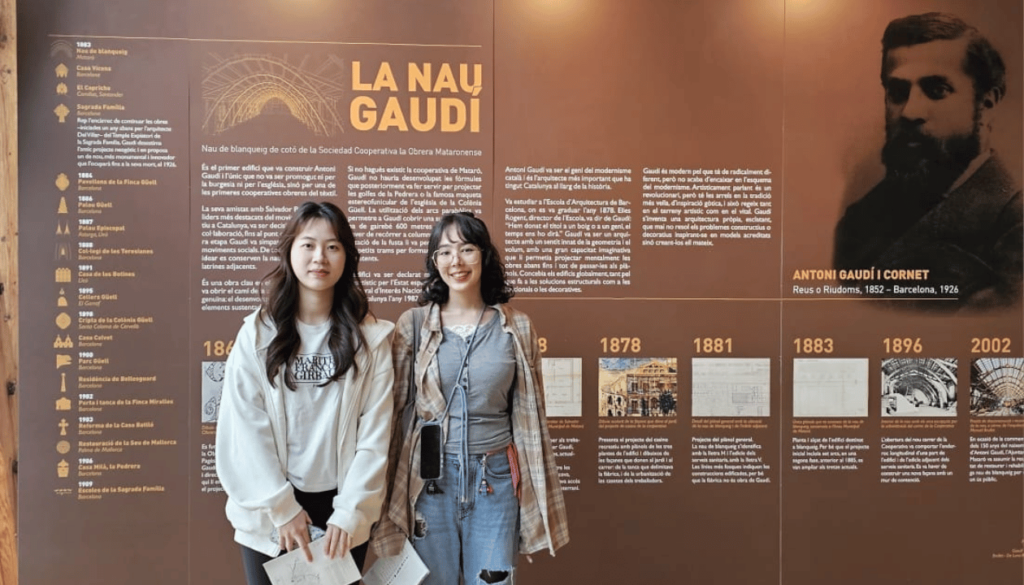
Elaine, who always had a quiet curiosity about spaces like this, felt especially drawn to the details. She told me she liked how real it felt, no pressure to take perfect photos, no tourists rushing by. Just space to breathe and learn. We sat in a small green space outside after the visit and chatted in Spanish about how design connects to daily life.
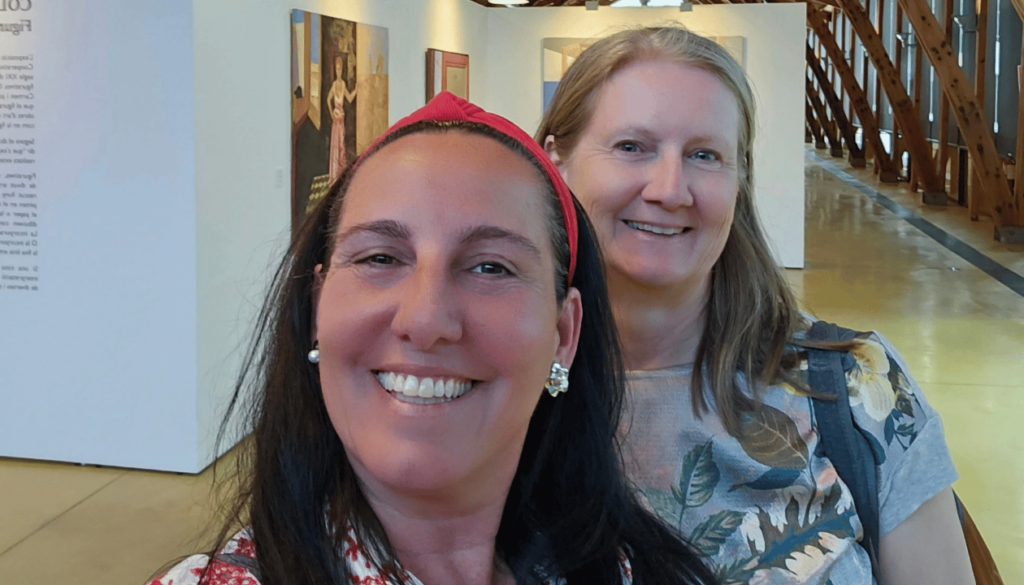
If you’re on a Barcelona solo travel journey and looking for a pause from the fast pace of the Gothic Quarter or Las Ramblas, take the train to Mataró. It’s easy to reach by public transportation, and a good spot to reflect, especially if you’re carrying a journal or camera.
Places like Nau Gaudí are reminders that visiting Spain isn’t just about ticking off the big landmarks. It’s about the quiet places that let you think, learn, and maybe meet other travelers who are also doing things their own way.
5. La Boqueria Market
If there’s one place that captures the rhythm of Barcelona solo travel, it’s La Boqueria Market. Just off Las Ramblas, it’s where noise, color, and flavors all crash into one. You hear vendors shouting in Spanish, smell sizzling street food, and see everything from dragonfruit to deep-fried calamari. Locals stop by for their daily groceries. Other travelers wander through, trying their first juice shot or spicy chorizo. It’s not just a market—it’s a story in motion.
Elaine was the first to be pulled in by it. She followed the smell of grilled shrimp all the way to a seafood stand. I saw her chatting with the vendor, trying out phrases she’d picked up during our lessons. “I can’t believe I just ordered in Spanish,” she told me, clutching a cone of prawns. She loved the freedom. It gave her confidence. Later that night, she told me she wanted to try a food tour next.
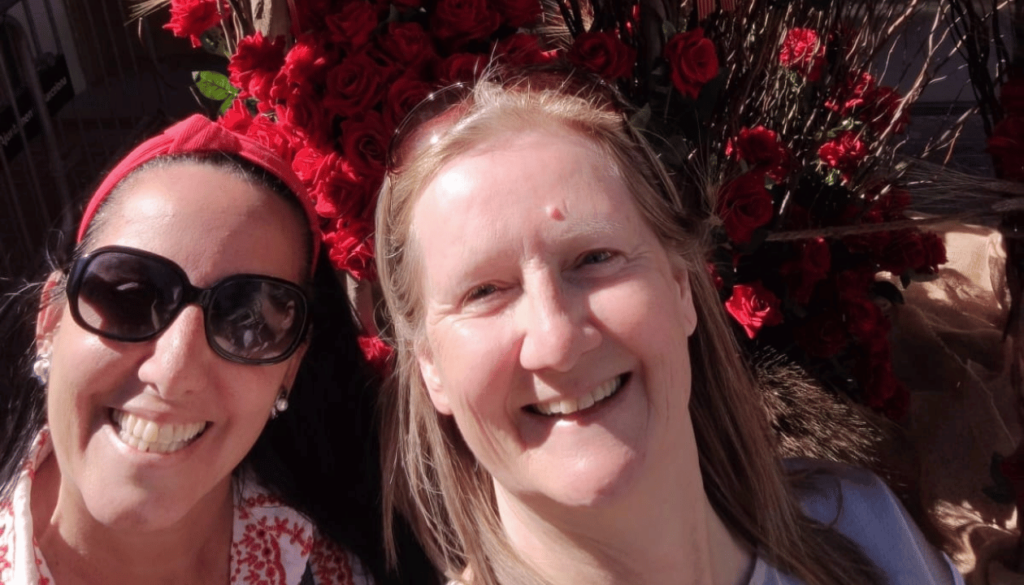
Ashley came with a plan. She always had a map, always knew where we were headed. But something about La Boqueria shook that up in a good way. She stood in front of a juice stall, completely frozen, not from fear, but from indecision. So many choices. She ended up picking mango-coconut, and when the vendor smiled and asked if she liked it, she answered in perfect Spanish. That small moment turned into something big. She even signed up for a paella cooking class the next day, her first-ever group event.
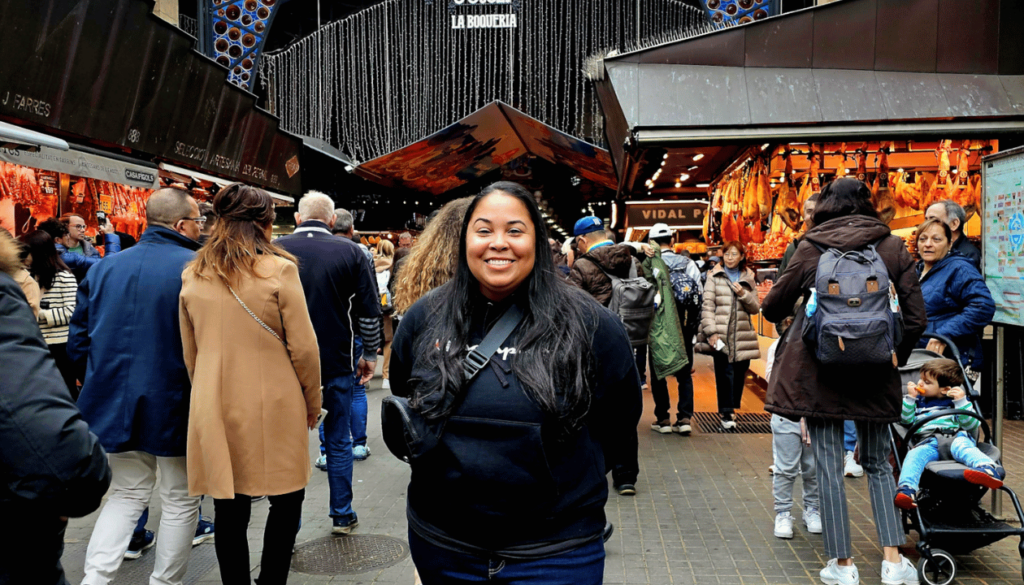
Dana was more cautious. This was her first solo trip abroad, and she’d asked me before, “Is Barcelona safe for someone traveling alone?” I told her, yes, especially if you know a few smart safety tips. She kept her bag close, but by the time she reached the back of the market, she was smiling. She tried chocolate-covered almonds, picked out some paprika, and even helped a lost tourist in English. “I actually feel like I belong here,” she whispered.
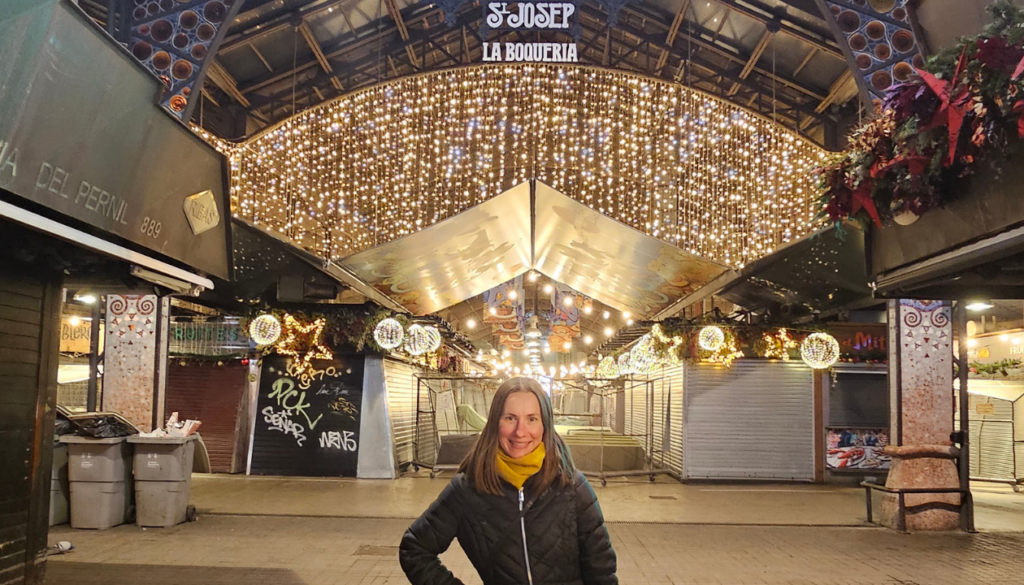
Sometimes, the best way to speak Spanish isn’t in a classroom. It’s between bites, between stalls, between new friends and fresh strawberries. That’s what La Boqueria gave them.
6. Gothic Quarter
The Gothic Quarter is all stone alleys, old archways, and hanging laundry over quiet plazas. It’s the part of Barcelona where time feels slower and history shows up in every corner — from Roman columns to the massive Barcelona Cathedral.
Elaine loved how easy it was to get lost here. She joined a free walking tour one afternoon and stayed after to sit in El Born with a small tapa and a notebook. She wasn’t in a rush. “I felt safe being alone here,” she told me. “This is where I finally stopped checking the time.”
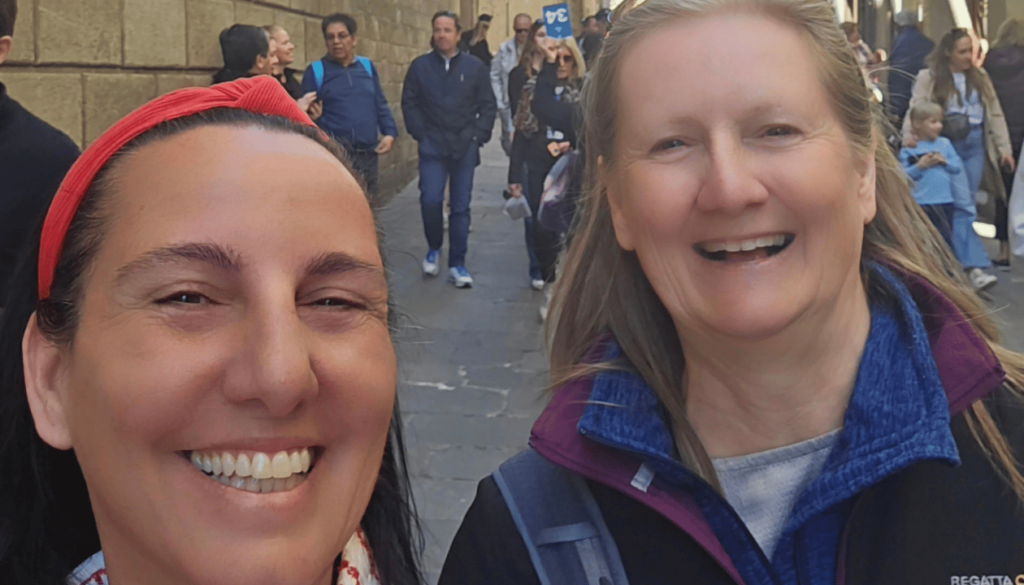
If you’re visiting Spain for the first time, don’t skip this area. It’s not just a pretty neighborhood it’s a feeling. For Elaine, it became her favorite place to wander, reflect, and quietly practice the language with friendly locals. The Gothic Quarter gave her the pause she didn’t know she needed.
7. Sagrada Familia
It’s hard to explain the feeling of standing beneath the towering spires of the Sagrada Familia. Gaudí’s basilica doesn’t just dominate the skyline, it kind of stops your thoughts. Mornings are quieter, especially if you get skip-the-line access, which I always recommend to solo travellers. You can save time, and it’s worth it just to stand still in that colored light.
Ashley wanted to see it alone, early. She took the public transportation from Barcelona Sants, wore her money belt, and arrived before the crowd. She said it was her favorite hour in the whole city “I forgot to take photos,” she laughed.
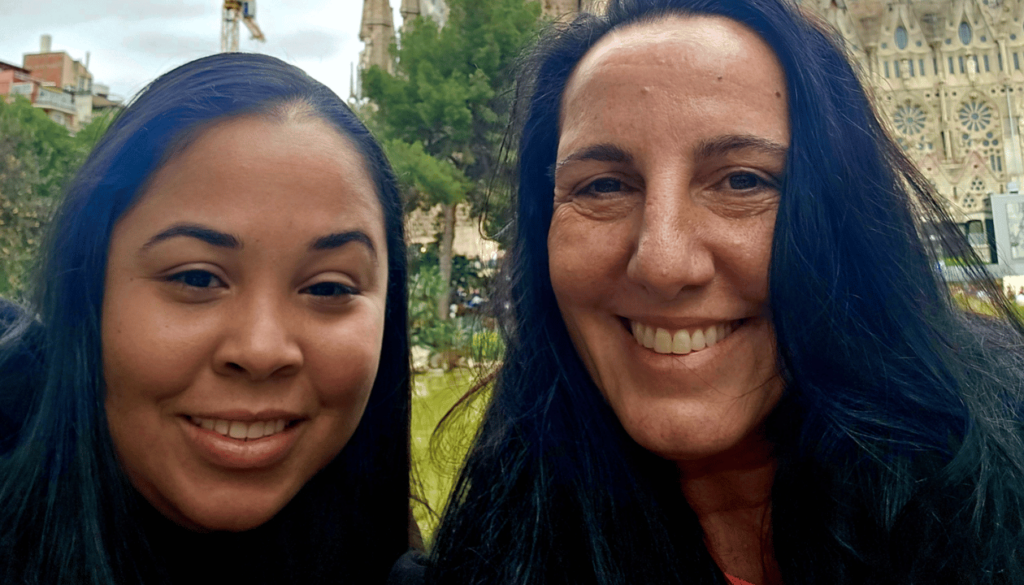
Dana went the opposite way. She booked a walking tour, made new friends on the spot, and ended up going for street food and cava with two other travelers she met. “It was less about the architecture and more about the people,” she told me later.
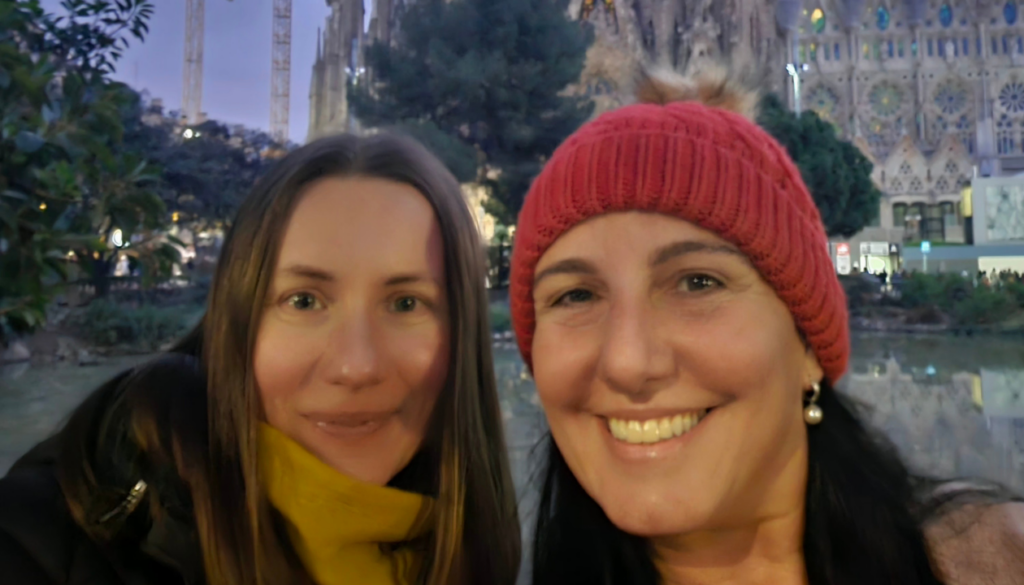
Anne-Laure did both. She started at Park Güell, wandered through green spaces, and came to La Sagrada Familia on foot. She later visited Catalunya in miniatura, one of the largest miniature parks in the world and the largest of the 14 miniature building exhibitions present in Europe. It displays 147 models of palaces, churches, bridges and other buildings from Catalonia and Mallorca and it includes all the major works by the renowned architect Antoni Gaudí. “Barcelona solo travel gives you so many ways to experience one thing,” she said. “You just choose your rhythm.”
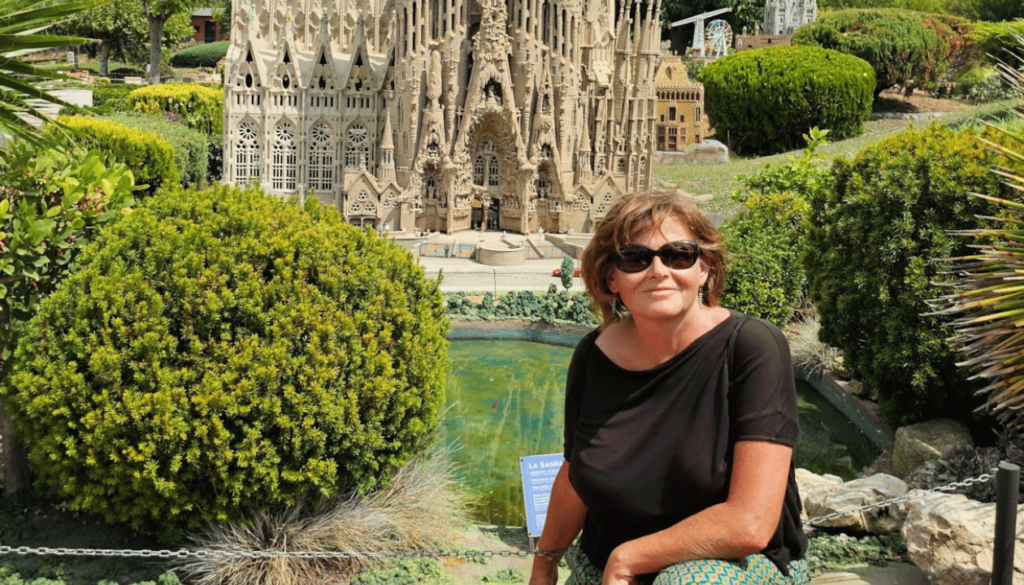
8. Castillo de Dosrius
Just outside the town, tucked in the Catalan hills, stands the Castillo de Dosrius. It’s not the kind of place you’ll find on a free walking tour or in typical guidebooks. The castle isn’t fully restored, and that’s part of the charm. With its crumbling towers, open fields, and sweeping views, it feels like a secret. If you’re looking for a quiet day away from the noise of Las Ramblas, this is it.
Dana joined us on a Sunday. She brought snacks from La Boqueria Market and wore sneakers, ready for the trail. On the way up, she asked a lot of questions about Spanish history. Later, while we sat on a rock near the tower, she told me the castle reminded her of places she’d seen in rural England. “But warmer,” she said, laughing. “And with better cheese.”
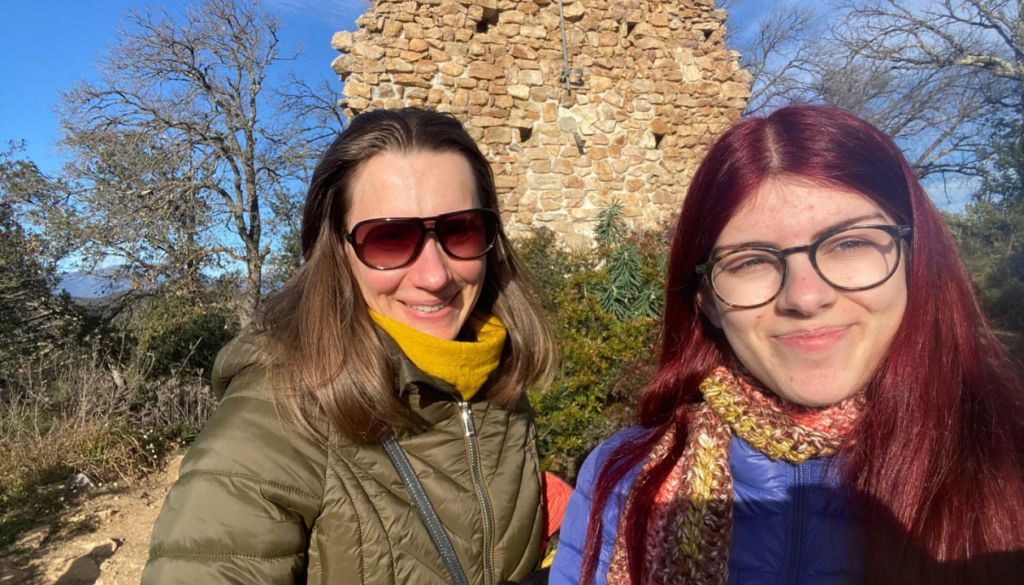
Elaine preferred the open space. She needed that breath. After spending a few days in El Born, hopping between tapas culture spots and language exchange events, the quiet hills gave her balance. She didn’t say much at the castle. Just stood still for a long time, looking out. That day, she told me, helped her save money and energy — “nature’s free,” she smiled.
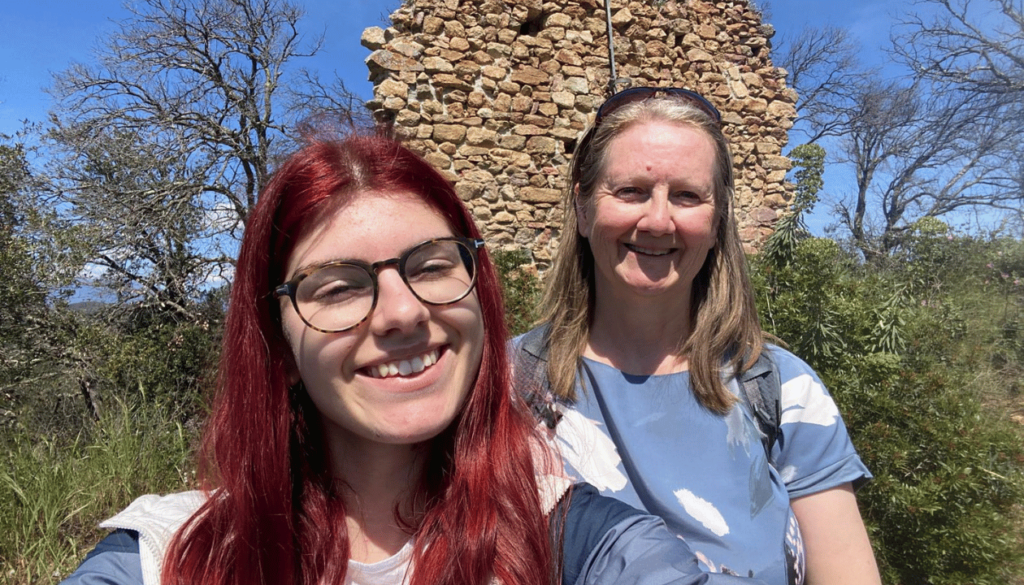
9. Flamenco Show
There’s something about watching a flamenco show live in Barcelona, the tapping shoes, the tight claps, the intensity in the eyes. It’s not just a dance. It’s a conversation. One of the best shows happens in a tucked-away venue near the Gothic Quarter, close enough to feel old Spain, far enough to avoid the crowd spill from Las Ramblas.
Fallon came with questions. “Do all Spaniards do this?” she whispered before the first stomp. Afterward, she couldn’t stop smiling. She had walked all day, from Park Güell to Casa Batlló, then caught the metro. That show, she said, was her favorite part of the day. It beat the views, the street art, even the food tour she took earlier that week.
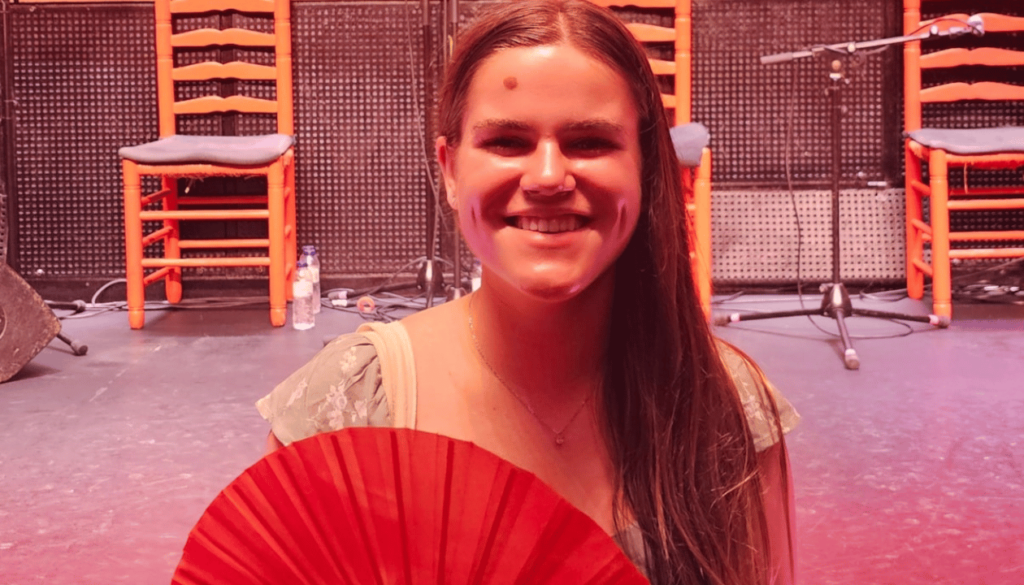
Funda didn’t say much. But I saw the way her shoulders relaxed during the final song. She had been cautious since arriving in the new city, a solo traveller, unfamiliar with the language. But that evening, something shifted. Later, while walking back toward Barcelona Cathedral, she asked if she could try a paella cooking class. “I want more of this,” she said. “The real stuff.”
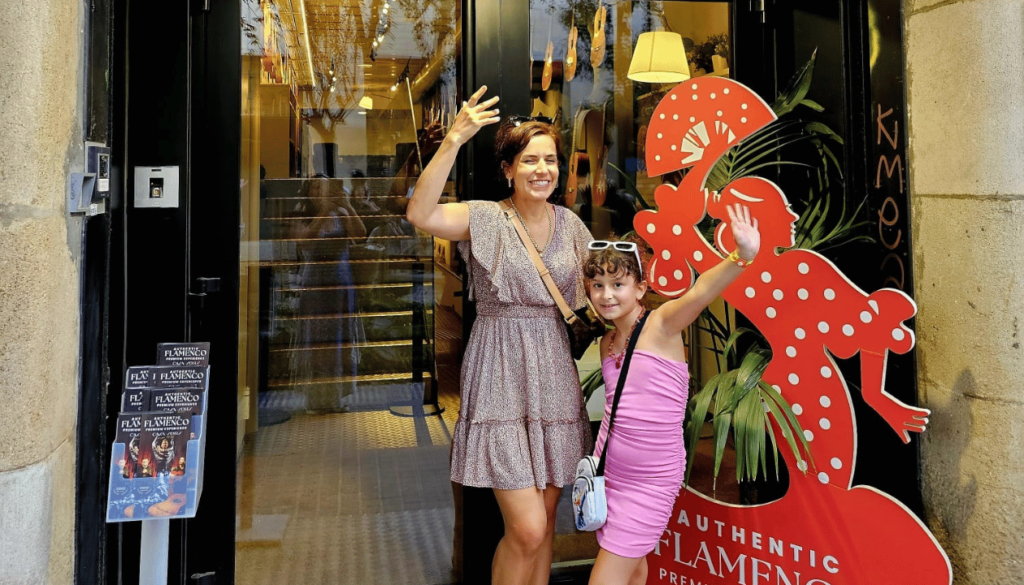
If you travel solo, don’t skip a flamenco show. It’s raw, local, and shared with other travelers, the kind of moment that makes you feel part of something, even on your own.
10. Parc del Montnegre i el Corredor
If you want a break from the bustle of Barcelona, spend a day in Parc del Montnegre i el Corredor. It’s pure calm. Forest paths, shaded trails, and wide green spaces. You won’t hear traffic here, just wind brushing pine trees.
Anne-Laure took one look at the woods and smiled. “This reminds me of home,” she said. She had just come from the Picasso Museum the day before, where she spent hours sketching. Here, though, she sketched something else, shadows on tree trunks and the curve of dirt paths.
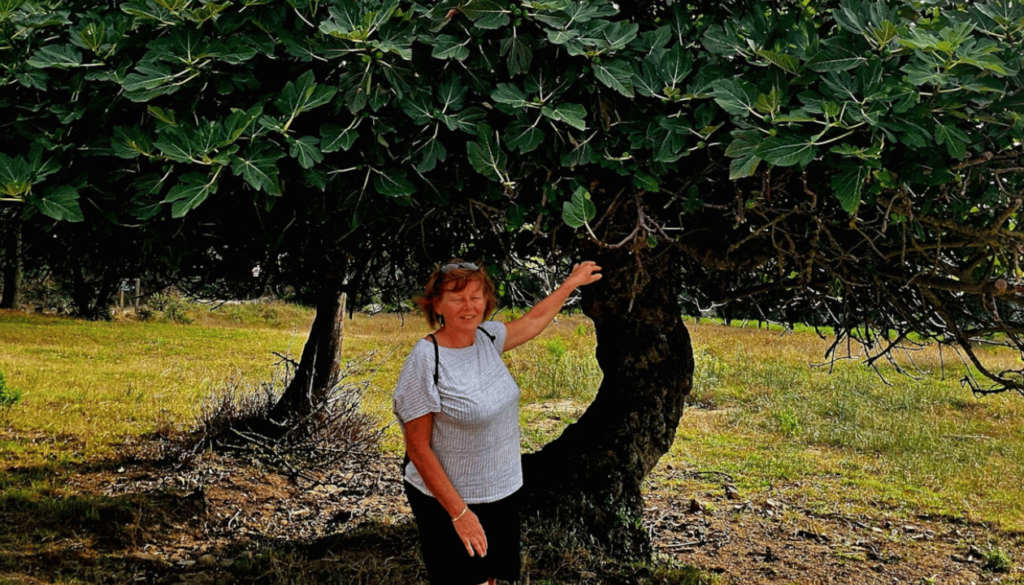
Christine, always the one with a snack in her bag, found a spot near a clearing. “I brought local street food from the market,” she said, holding out a foil-wrapped surprise. We sat on a tree stump and shared it. Not tapas, not paella, just food, a view, and stillness.
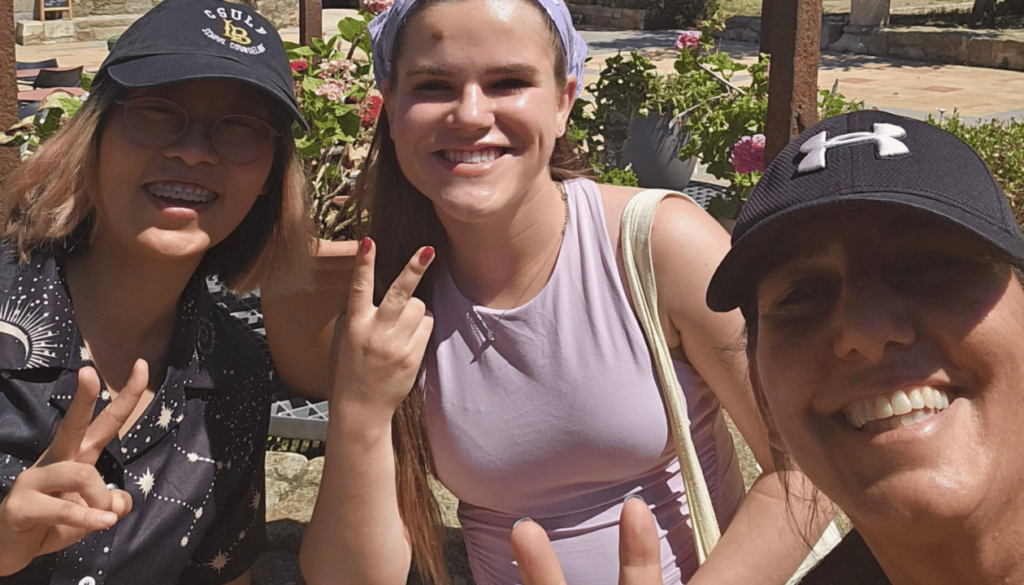
If you’re visiting Spain as a solo traveller, this park is worth it. You’ll return to the city recharged, with muddy shoes and maybe a new sketch or two in your notebook.
11. El bosque mágico
El Bosque mágico isn’t in the guidebooks. It’s one of those places you only find if someone tells you about it. Hidden in the hills outside Barcelona, it feels like stepping into another world, one with mossy trees, fairy-tale carvings, and a kind of quiet that makes you forget your phone.
Christine heard about it from other travelers at a language exchange event the night before. “They said it’s peaceful,” she told me. “That clears your head.” She packed water, layered up, and set off early. The trees had faces carved in them, and little wooden signs pointed the way forward, some in Catalan, some in Spanish.
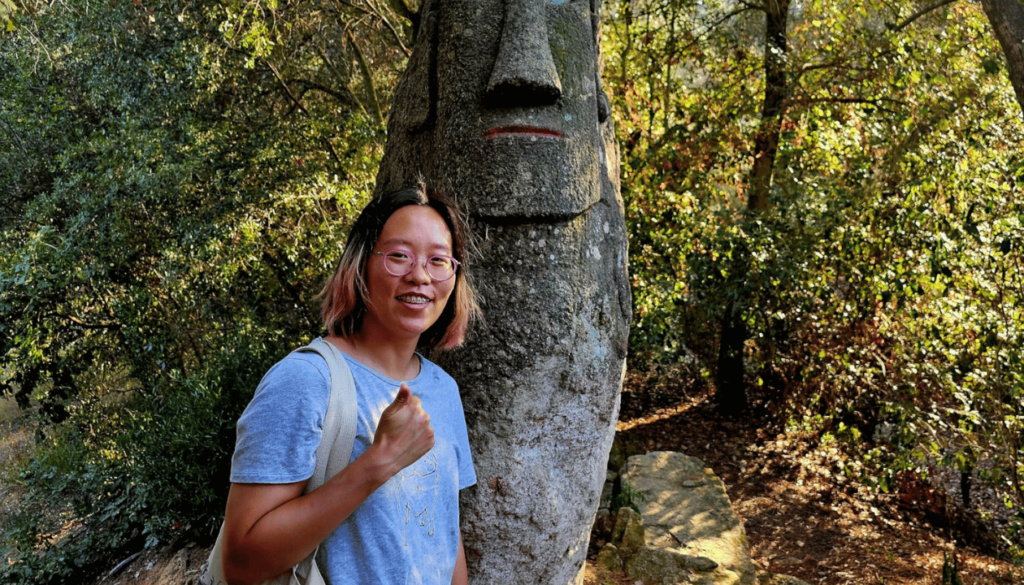
She didn’t need to speak Spanish fluently to feel the magic of this place. “I walked for two hours and didn’t feel unsafe once,” she said later. “It’s a safe city when you know where to go—and how to respect it.”
For a solo traveller, this kind of hidden gem is priceless. No crowd, no ticket line. Just a deep breath and a trail that welcomes you back.
12. El Garraf
El Garraf isn’t far from Barcelona, but it feels like it belongs to a slower world. Dry hills, winding roads, and sea views that stretch forever. It’s the kind of place you escape to when you want a break from hotel rooms, lines, and busy walking tours.
Cara took the train from Barcelona Sants early in the morning. She brought a book, sunscreen, and a picnic she picked up from La Boqueria Market. “I didn’t want a crowd. Just cliffs, space, and time to think.”
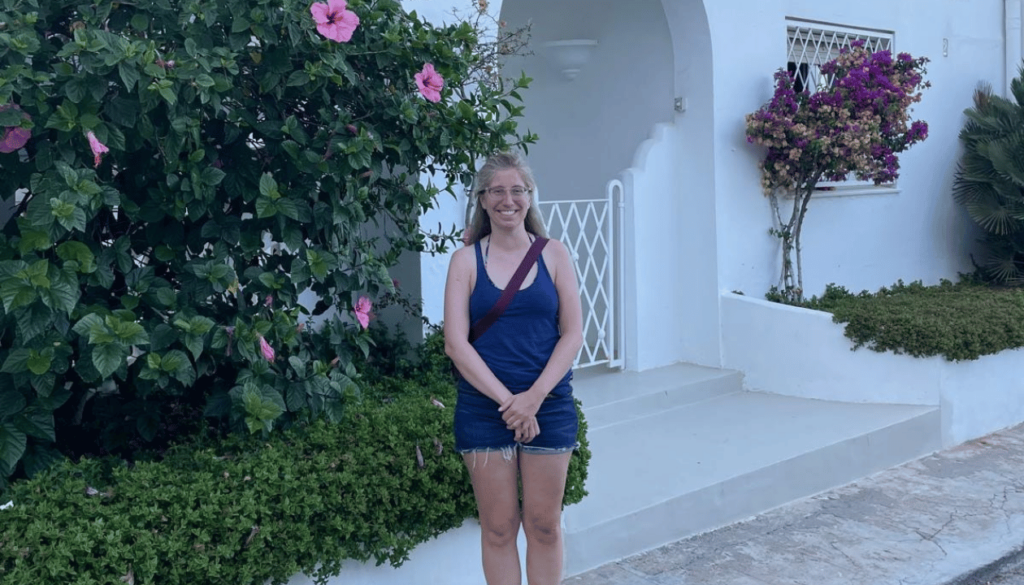
She walked along the coastal paths, passing the occasional hiker or painter. “Everyone gives you a smile here. No rush, no pressure. It’s the perfect green space for solo travellers who want nature without going too far.”
That day, she told me, was the first time she didn’t check her phone once. “I didn’t need to,” she said. “El Garraf gave me everything I came to Spain looking for.”
13. Cantir d’Artista
This cozy pottery studio in Argentona, just outside Barcelona, was one of our most surprising finds. Cantir d’Artista isn’t on every free walking tour map, but maybe that’s what makes it so special.
Lilly had been searching for something quiet and hands-on. “I’d done the Picasso Museum, admired street art in El Born, but I wanted to create something myself.” She spent the afternoon shaping clay, learning traditional techniques from a Catalan artist who didn’t speak Spanish, but somehow they still understood each other.
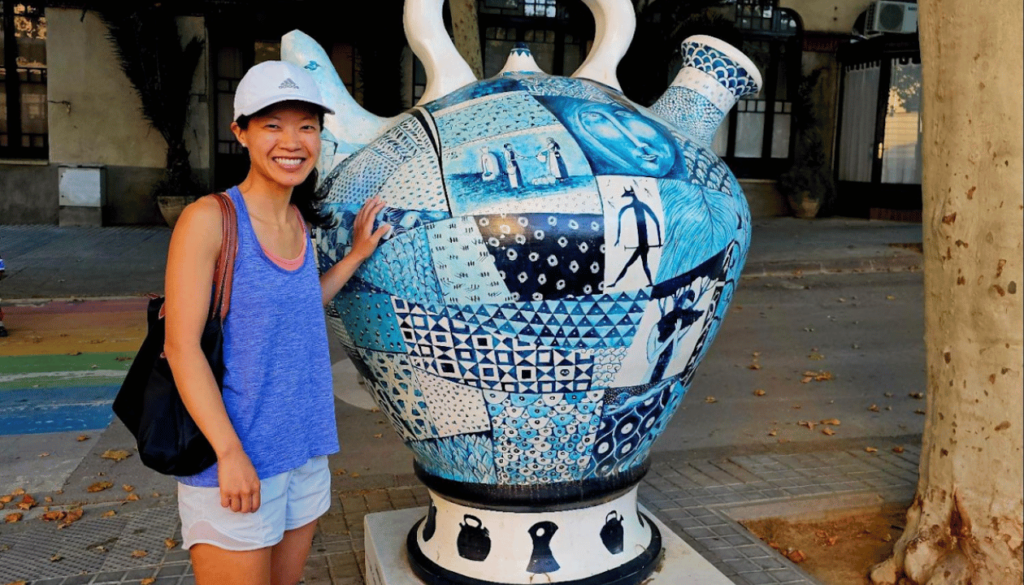
Celtina and Brivael joined the next day. “We’d been bouncing between Las Ramblas, Sagrada Familia, and a paella cooking class, so this felt like a reset,” Celtina said. “It was the first time in our trip we actually slowed down.”
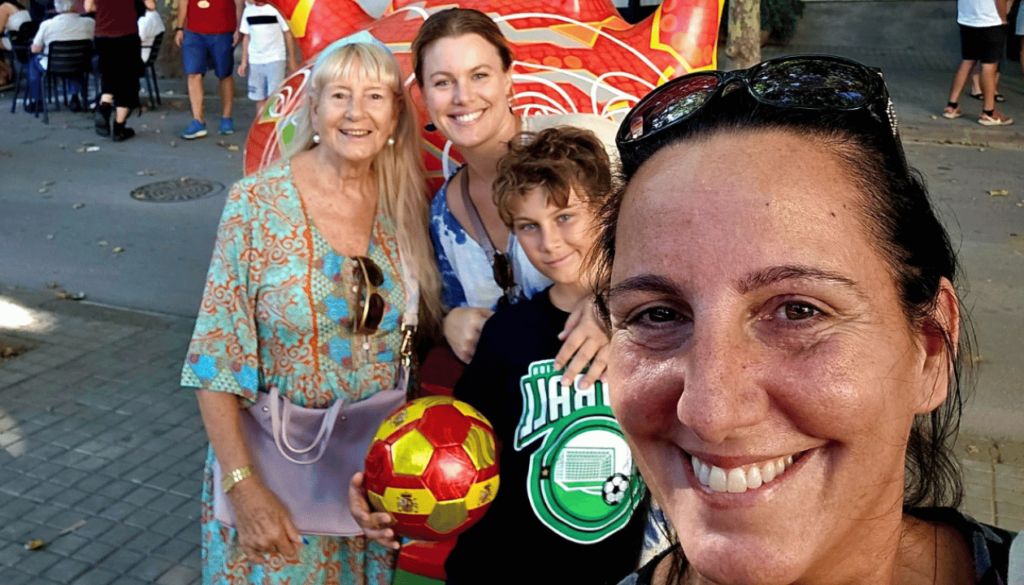
All three of them brought home their own ceramic mugs. “They’re wobbly,” Brivael laughed, “but they’re ours.” It was a small moment, but a powerful one, proof that sometimes the most meaningful souvenirs don’t come from shops.
Ready to Start Your Own Spanish Adventure?
If all these stories sparked something in you, maybe it’s time. Come join us in Barcelona, not just to see it, but to live it. Learn Spanish, meet new friends, share tapas, take a food tour, or maybe try your hand at pottery like Celtina.
You don’t need to be fluent. You don’t need to be brave. You just need to come. We’ll help with everything—day excursions, public transportation, safety tips, and all the small things that make solo travel feel safe and special.
Because here, you’re never really solo.

